10 years ago by
India’s work is something you’re probably already familiar with if you’ve been reading the blog for a while, but you may not have even realized. She is the wonderful designer that did the Hotel Thoumieux and Sketch—two of my favorite interior stories on the site. But I first became familiar with her work when Garance showed me a copy of her book Home Chic as inspiration when we started working on the book. Her interiors and furniture are really playful and energetic, she uses color and shapes in such an interesting way that really makes you dream.
When we spoke for this interview, it floored me how much her studio and our studio have in common. Even though we do different things, she and Garance have gone through a lot of similarities when it comes to running a business and being a creative. It really inspired me to think about what we’re doing in a different way, I hope it will inspire you too!
—————————-
You do so many types of things, so what would you say your job title is?
My job title is, basically, woman of all trades. (laughs) It’s more like I’m an art director. In a way, I create direction of what I want. I work with several teams and tell them what I want and we work together and that is what it’s all about. Creating and giving the right energy to the right projects. It is all about energy.
So when you were growing up what would you say your dream job was as a child?
I wanted to be a filmmaker.
Where did that interest come from?
As long as I could remember, when I was young I would fantasize. I realized my dreams were always related to some sort of aesthetic dream. And, in that sense, we didn’t have access to everything we have today: the Internet, the images. So basically what we had to dream with was either books or films or movies or television. I would always project myself into a life that was an aesthetic life. And that was not necessarily the one I grew up in. Not that it was uncomfortable, I just dreamt my life in a really aesthetic way and I know that that’s what I was looking for. So every filmmaker that had a really strong environment was appealing to me. And I’m referring to Kubrick, Fellini, Visconti, to all those filmmakers. All those people had a strong visual universe.
You were saying that you grew up in a really different type of environment. What did your parents do for a living?
My parents didn’t work for a living. [Editor’s Note: India’s father was an academic and her mother stayed home with her five children.]
I know that you are from Persian and Egyptian descent, and I was reading that you grew up all over the world. Can you tell me about the places you lived and how they influenced you?
My first memories came from Cambridge, Massachusetts. And also my first memories are in technicolor. Because I remember that those years, in the 60s in the United States, color television had just appeared and we had all those bright and candy colors all over the place. I remember going to kindergarten, with my lunch box and peanut butter and jelly sandwich. That very American sweet flavor. That’s where my color, my passion for color came from. Because it’s part of my memories. We don’t know how memory works, but when I think of my first memories in US they come in color. When I think of my first years in the south of France, or in Germany they come in black and white.
Then I left Cambridge and moved to Heideberg for a year, and I remember living in the most incredible Adams Family house. A very neogothic house, with a forest in the back of the house. And it felt like black and white, all of it.
Then we moved to the south of France, which were the first years I went to boarding school. What really happened was my childhood was very much under the sunshine in the South of France and in the United States. They were really sunny days. And I realized I used color to replace light.
It’s really interesting to hear you talk about this because in your work you really can see that, the use of color and the way you play with light in a space.
And that’s how I bring the sunshine in my environments. Using color and more color, and then it makes places look happy as if being lit by the sun. Then actually because I use color as light, I’ll use textures as colors also. That’s how I mix things together.
…that’s how I bring the sunshine in my environments. Using color and more color, and then it makes places look happy as if being lit by the sun.
I know you ended up in Paris and that’s where you went to school Ecole des Beaux-Arts. How did you transition to wanting to be a filmmaker to an education about architecture and furniture and design?
When I graduated from high school I wanted to do film making and there was only one school where that was available in France at the time, and the school was a post-graduate degree. So you had to do something before and then you could apply. It was a school where you had hundreds of hundreds of people and four places available. So I had to do a undergraduate program and, at the time, I was great fan of Fritz Lang. And I found out that Fritz Lang trained as an architect.
So I decided to follow his path and it might lead to something else. Of course by the time I had finished my architecture school, I realized that France wasn’t the right place to do what I wanted to do. I had decided I wanted to do film sets at that point and maybe films like James Bond. Like Ken Adams [the set designer that did the James Bond films in the 1960s and 70s], I really admire his work. But I realized that France did not produce films like that.
I had decided I wanted to do film sets at that point and maybe films like James Bond… But I realized that France did not produce films like that.
How long were you in France before you came to New York to study?
Seven years. I thought then maybe this is not exactly what I should be doing. So I decided to test things. I needed that. Just to get out of Paris, so I went to New York. And I found these different programs so I did graphic design at Cooper Union and furniture design. So product design, graphic design, and I realized I was much closer to that scale of work rather than working with architecture. Also that production of architecture was a really long process which I felt uncomfortable with. You do one building in seven years. And how bored can you get! So the production time was too long for me and I wanted to move much quicker. It was more fun.
So I came back to Paris and started working with Christian Liaigre [most known for his furniture]. So every six months there was a new project and it was fun. And I could start working on furniture and that was where I learned to work with materials. I learned that you can start designing a room with an object or material and take it to a larger scale instead of taking it the architecture way, which is when you have a piece of land that you work from. A very big scale that you work down.
It’s interesting that in the projects you are doing you are using the fundamentals of architecture and having to change the structure of the space externally too as you work on the interior and the furniture. It seems like you’ve created a well rounded sensibility in the way that you work.
It’s true and it’s interesting that you say that because I use so many colors and patterns, people stop at the decorative part. But behind the decorative part there’s a lot of work put into circulation.
I was looking at the house in Litchfield, Connecticut and read that you had to change the roofscapes and things, and thought it interesting that your architecture background is moving into some of the things you are doing.
Absolutely, when you study architecture it’s really a state of mind. You become very structured and it’s something that you don’t lose. It’s something I use all the time in all my projects.
I’m sure it plays into the way you design your furniture as well. Thinking about scale of space and those kinds of things.
Absolutely, the scale of light, circulations, energy. All of those thing are really important to me.
So after you left school and had this job with Christian Liaigre, making furniture, and working on these projects. What was the transition to really starting your own studio and breaking out on your own?
I was pregnant and suddenly, with this maternity thing, you start to project your life and you start to become an adult in a way. And you project yourself and say, “What kind of life do I want to give my child?” And then you ask yourself a million questions, “Well, I could stay where I am, or should I move?” “Or should I start building something on my own?” And I knew I wanted to travel and I wanted to feel free.
I was working for Christian Liaigre so I resigned and I started my own company from my living room. This was 19 years ago.
So how did you get your first clients? And what was the first job that you did that was just yours.
One of the persons that encouraged me to go out on my own, (I had quite a few people telling me you shouldn’t go one your own, what are you doing) was Joseph. Joseph Ettedgui from the fashion brand Joseph. He told me that, “If you go on your own, I will help you.”
I was pregnant and suddenly, with this maternity thing, you start to project your life and you start to become an adult in a way. And you project yourself and say, “What kind of life do I want to give my child?”
Then I started working with private clients in London. Then at a dinner party I met Jonathan Morr. And he said after, “Can you come help with my apartment?” and, “I’m doing this hotel in Miami, could you take care of that?” And that was Townhouse. Townhouse was one of the first inexpensive and cheerful hotels available. There was no Standard Hotels, there were nothing available at that time. The Delano had opened, but this was another option for people who didn’t have the budget but had the style. And one of the features of the hotel was fantastic and it was the rooftop where there was a swimming pool with these red water beds which we had made. And it became the talk of the town and all these parties happened there.
Then I did a nightclub in NYC called APT which was also very successful because it looked like an apartment. I designed it for a bachelor that I had imagined. So you entered, and I had built it from nothing because it was a loft. So I built it with a really long corridor and all the things we hate in apartments but I was turning them into features so it looked like a real apartment. And that was really successful too.
So from there I’m sure people were seeing what you were doing and were calling you.
Absolutely, and I was supposed to do a project with Ian Schrager and he had contacted me to do a whole hotel. But then 9/11 happened and he sold the whole property. It’s interesting how all these things change your career in a way…
I’m new every time because every time is a new time and it’s a different story.
You’ve done all of these hotels and these more commercial properties, and also private residences. Can you talk about the different types of projects you’ve worked on in terms of the commercial and residential and how they are very different in the way that they are approached?
A private client is very special to me. It’s like a portrait. Like I’m the photographer. I want them to look their best. I’m going to use the bright light, but all the material has to look like them. I also don’t want their home to look like me. I want them to feel happy and be able to evolve and have their own taste. So I work a lot on the structure with them and we work really closely.
And then on public spaces. It’s truly the question of trying to find the identity. It’s like a 3D identity project. So I would like to define a place that can be sustained after that and can become its own self. I don’t want it to necessarily look like me, but I like the fact that somebody might take photo somewhere or remember the sketch or remember the café or remember the photo because it has a strong identity.
But I’m new every time because every time is a new time and it’s a different story.
In all of your spaces, and with the furniture, is a common theme of these curves, which creates a feminine feeling to it and then the use of color, so how would you describe your design aesthetic?
I think it’s a cross-cultural situation. I’ve defined it as “pop orientalism” in a way. Because it’s true that I mix and match a lot of things as long there is something harmonious. Harmony is really something that bothers me because I like it to be edgy at the same time. I think what I’ve tried to do all these years is to find a modern comfort and modern comfort comes not only with what’s comfortable with your body but also visual comfort. I’ve defined that in a way where I look for stuff, like products, and the furniture and the products that appeal to engage your senses. And I think that one needs that. In a world that is more and more digital, there are a lot of things that happen remotely and it needs to be counterbalanced. You need to touch, need to feel embraced, you need to feel hugged, some kind of softness in your life. I think my work is about that: what can I provide to make you comfortable. Just like a hug from a mother in a way.
Is there a kind of project you haven’t done yet that you would really love to do?
So many things that I would love to do. And thank god. Otherwise it would be totally blasé. Every project that I do, I really think there is something to learn and something to discover.
But I would love to do larger scale projects. Because I think a lot of people have identified me as something intimate and have linked me to intimacy. How can we deal with intimacy on a larger scale? I would love to go to back to architecture and there are so many things to do, so I’m open.
In a world that is more and more digital, there are a lot of things that happen remotely and it needs to be counterbalanced. You need to touch, need to feel embraced, you need to feel hugged, some kind of softness in your life. I think my work is about that: what can I provide to make you comfortable. Just like a hug from a mother in a way.
So why did you decide to have your studio in Paris, after being in New York and London?
It was kind of a natural thing because I was here and when I worked for Christian Liaigre I was in Paris. I think when you are at the center you don’t necessarily project yourself, just things happen and you follow them. Opportunities cross your path and you say, “Oh, okay, I’ll do that.” You don’t necessarily trace your own way by design. So things just paved my way and I accepted them. And I met people and it just happened that way and I also realized Paris, to do what I’m doing, is one of the best places in the world because there are so many know hows, so many artisans that I can work with, craftsmanship. I feel that Paris is the capital of interior design in a way. The way you tell stories, that when you hire a french interior designer you are not only getting decoration you are getting so much more. You are getting a whole story, something authentic, a way to use the space, a program, an everything kind of thing.
How was the transition from doing your work and doing your own thing to being a business woman and running your company?
That’s the tough part. So, after three years of starting my company, my sister joined me and she prepared a lot of the business issues. And thank god she’s with me because I know she’s very secure. So not only is she trustworthy, but she won’t take any crazy risks. So having her behind me has been a really great help because I’ve been able to move forward slowly, but surely.
But it’s the tough part because, today, I don’t want to deal with any other issues. I just need to move on to be the creative thing, but today you have to do so many different things. And it’s true that furniture has a certain rhythm and projects are different. And when you add all these roles together you realize that spending a day doing pottery is something that becomes very rare for me. Actually the other day I went to the factory in Normandy to do pottery and I really enjoyed it, but things like that don’t happen to me as much anymore which is really sad.
When you start, you are in the middle of the team which is great but as the pyramid grows you become alone at the top of the pyramid. So your team is around you but you’re up there alone.
We face the same challenges at the studio in a way. Especially for Garance. She’s written about it on the blog, but the book was such a different type of work that sometimes you are no longer doing things for pleasure but always to complete a project.
It’s funny that you say that because it was coming to the point where it was growing and growing and it was too much pressure for me. The team is like a pyramid. When you start, you are in the middle of the team which is great but as the pyramid grows you become alone at the top of the pyramid. So your team is around you but you’re up there alone. And how to relate to people becomes scary and it just happens one day. Then I decided that it’s not really the way I want to work. So I decided to think more about the projects I wanted to do or not do and see how things move on and to put more energy into my furniture. It’s important not to lose why you wanted to do this business and this profession and not another.
So how many people are working for you now?
More or less 16.
And are their roles are a mix of project managers and creatives and that kind of thing?
I have architects, interior designers, artists, product designers. I have production people, finance, administration. When I saw Erik this morning I said I wanted an in house photographer.
I would also like to have a graphic designer. You want to get all the trades. Because I’m always working and thinking and, all of a sudden, I have this idea. And if I don’t write it down I will forget and have to hire someone to do it. So if I had all these people with me it would be a much quicker process.
How would you describe your average day? Does it exist for you?
When I’m traveling or when I’m not traveling? I travel around 3-4 times a month. For example, once a week this month. I was just in London for three days and just got back, and tomorrow I’m leaving for London, just for the day, and then I’m coming back. I’m going to NY for three days, back to Paris for two days, then I’m going to Beirut. Now I have to go to Milan and Geneva. So it could be a crazy month like that, or I could be around for a couple of weeks without moving.
Usually what I do is I come into the office between 10:00 and 11:00, and then I will work, meet everybody, then go around the showroom downstairs. Because I like to look at the showroom like I don’t know the place. I like to have a virgin look on things so I can see what’s wrong. Sometimes when you are so used to a place you don’t see it anymore. So I tried to see the place and have a chat with the girls to see what they need. We try to have a meeting every three weeks. About product, design, and how we want to work on it. To brainstorm and decide about what products we design. We want to make sure that the girls in the showroom believe in the products. When the girls say that they don’t believe in something, I won’t do it — because they have to believe in it.
Then, once a day I meet with Lili, my office manager. She will catch me up on my meetings, schedule, on my travels, contracts and emails, press. And then I will go around and sit next to the people in the studio and talk to them. I can’t work on computers at all. I would love to, but I feel like my energy is elsewhere. So I sit next to them and design with them, and I put forward my sketches and give indications of how they should design. We just go around and around. I’m very present at the beginning of a project. Defining the rules. Every project has three or four elements that define the identity. Those things have to be clear so we try to verbalize a lot. Right now I’m working on this department store in Germany, so when we start “What are we going to do?” there is a plan on one side, but we have to tell the right story. Why is it not Galeries Lafayette, not Selfridges? Why are we going to be in Berlin? Those are all the questions we ask ourselves and this is how we work to use all the elements that are available to us to grasp the constraints and the essence of what the project will be.
I can’t work on computers at all. I would love to, but I feel like my energy is elsewhere. So I sit next to them and design with them, and I put forward my sketches and give indications of how they should design.
What would say you like the most about your job?
Being able to do so many different things at a different scale and meeting so many different people. It’s really going from each client, who can be a private client or a huge company where you meet really creative people, too, and learn so much from them. Some of my friends are people I admire very much and I have learned from them. Then I meet people who have fantastic craftsmanship, who have dedicated their lives to making beautiful things. Then being able to travel. I realized how lucky I am. When you do a job like mine, it’s not a job; it’s a way of living, it’s what you do. And it’s really fun.
What would you say the most challenging part of your job?
What has been challenging for me, especially now that my family is a lot older, is actually raising my child and being a mother. Being a business woman and a creator. Being those three things. And being a wife to a man. Having all of those roles at the same time is super challenging.
What has been challenging for me, especially now that my family is a lot older, is actually raising my child and being a mother. Being a business woman and a creator. Being those three things. And being a wife to a man.
How are you able to balance all of that? Because as you said it is a lifestyle and it’s not like you can compartmentalize your work and family and yourself.
It’s been quite challenging. It’s very difficult for a woman to do all those things at the same time. No one I have met wants to be with someone that works the whole time. You have priorities in your life, which has always been my son as my number one priority. He went to boarding school and now he’s studying architecture in London.
Following in your footsteps!
Exactly, it’s great. Now I have a little more time for myself. I think doing it all at one point, raising my baby and starting my company… If I had to re-do it, I wouldn’t change anything.
So that’s one thing and the other is the business side of things and understanding it. Because a lot of it is common sense. I would never go down into the numbers; I keep a distance with it. The management of people is quite difficult for me. To remain creative at the same time. Sometimes you find great managers and great creatives, but how do you manage to multitask. I’ve come up with rules now. I don’t want to hear about problems I only want to talk about solutions. Things like that. Reassuring little sentences that make things easier.
How many are you at Garance Dore?
We are seven including Garance. We are also always looking for ways we can balance, the creativity and the business, life and work, all of these things that ultimate you’re doing to make you happy, but can also cause stress.
That is one thing that is really sure. That, before you know it, time flies so quickly and you are always running after something. I don’t want to take that pressure anymore. What is it that I’m looking for? What is it that I can do? So once you relax and say I understand what I want. I’m not running after the business, the business will come to me. I don’t want to take just any business, I just want to take the right projects for me with the right people.
You do furniture, object, design, your book. It’s a company that expanded in many ways, but it seems like it is an expansion but also a contraction to have real control instead of pushing pushing pushing to make it bigger, bigger, bigger.
It’s true. It’s not that I’m a control freak, maybe slightly. [laughs] I have concentrated everything I do in one streak. I have made it easy for myself. I wanted my business to be very local and very global which is what I’ve managed to do. I think I also managed to take control of the projects I do. I’m a small company compared to my recognition. But what you’re building is a lot of fun, but you have to make sure your base is really solid. It really depends on what your vision is. Is it to become a huge company and control I don’t know what or is it to say that I want to create a complete environment. My furniture, the interior, small objects, maybe a few materials, wallpapers… Then you make complete surroundings. Of the things I can do, you can get a complete environment, I also, with my small objects, wanted to touch a clientele that can’t necessarily afford larger products. And also work with worldwide craftsmanship that don’t necessarily have access to in France. Those are the things that are important to me, that I am able to modernize. Some of the know-hows are available and I think it’s very useful for all of us because it’s a part of our culture. In any case, I don’t have any ambition to become a huge company because I don’t think I can handle it. It’s not my mode of function.
I don’t have any ambition to become a huge company because I don’t think I can handle it. It’s not my mode of function.
What is your favorite project?
I have many favorites. It’s very difficult to say that this was a favorite or else other people get upset. One of my favorite was the Hôtel du Cloître in Arles, or the Condesa DF in Mexico. Because these are projects that changed an area. They have had an impact. The hotel is in a new position, within the area of the city or the city itself, in a different way
Sketch also had a huge impact.
Yes! We’ve shot it for the blog, we’ve shot a lot of your projects actually.
I saw it, it’s great. I was telling them that I did all of Sketch in four months because it was a quick quick quick job. It had to be thorough and get to the point. You know, I went to the place and said it had to be pink so we just went for it. And Mourad said I’m not crazy about pink, but you do what you think is right.
So how do you deal with clients who don’t agree with you?
They might not agree but say I trust you. And some people say I don’t agree for this reason and I try and understand why they don’t agree. Often the answer lies in the reason. So you just need to adapt and work around it. But I don’t believe that when a client hires you, you should disagree with them. You’re not supposed to fight with them it’s supposed to be a pleasurable experience. Also: a good project is a good client.
Often the answer lies in the reason. So you just need to adapt and work around it. But I don’t believe that when a client hires you, you should disagree with them. You’re not supposed to fight with them it’s supposed to be a pleasurable experience. Also: a good project is a good client.
What advice would you give to aspiring designers, whether they be interested in interior or architecture?
To always be curious of everything. To see as much as you can. To go to exhibitions. To read to go to movies to always be on the lookout. To be a journalist in a way. Not only that you should take in what happens, because there’s not any limit to optimize the whole thing. Just push your limits the whole time.
Do you have a mentor?
Not really… Joseph was a mentor in a way.
Just push your limits the whole time.
What is the best advice you have ever received from someone that you always keep with yourself?
Joseph told me that it’s about personality. He said don’t ever worry because you have a great personality and that really makes up for a lot because then people will want to work with you. I’ve learned from so many people so many different things. Joseph taught me to simplify situations. Instead of making a situation complicated, simplify until you get somewhere. But every client teaches you something.
What do you look for in the people you hire with you on your team?
I look for many things. For too much. I want people to have a good personality with positive energy. And then, for me, a team is balance. A person is like this or that. I look for people that complete each other. Not compete with each other, but complete each other. A team as a whole rather than a bunch of individuals stuck together. It’s also a question of sensitivity because we are in a world where we have aesthetics values. So they have to be compatible of course.
Instead of making a situation complicated, simplify until you get somewhere. But every client teaches you something.
So what is your dream for your future? Not just your company’s future but for you personally?
Oh là là. I think I would like to do personal project. When I say personal, I mean I’ve been doing these projects for all these clients for all these years, I think I would like to do a project for myself. I don’t know exactly where it will be or where it will take place. But I think it is time for me to say: I believe in this, I want to take the risk. This is what I want to do.
That is one thing I want to do for sure. Also I’m coming to an aesthetic maturity, but I have to define exactly how to take my business and say: we should have a space in NY and London…





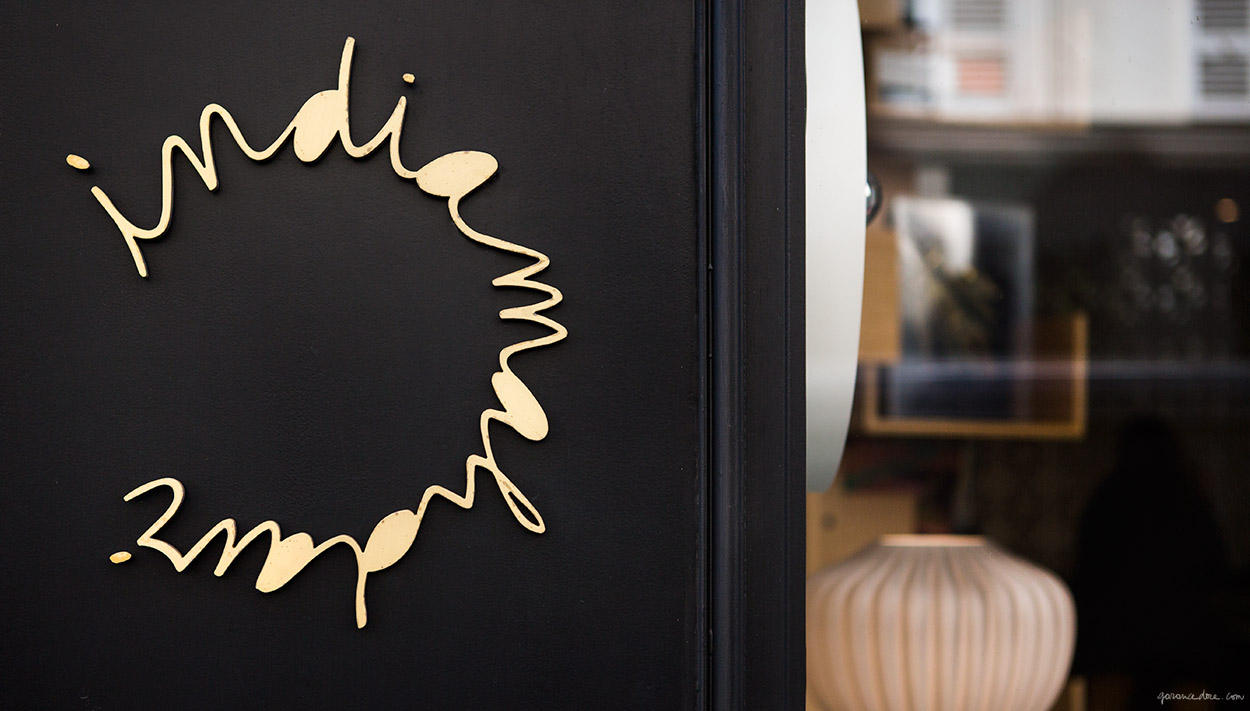
























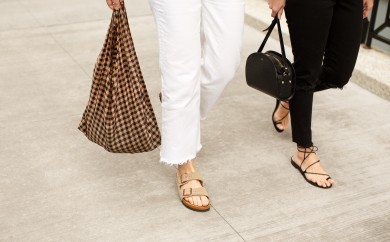
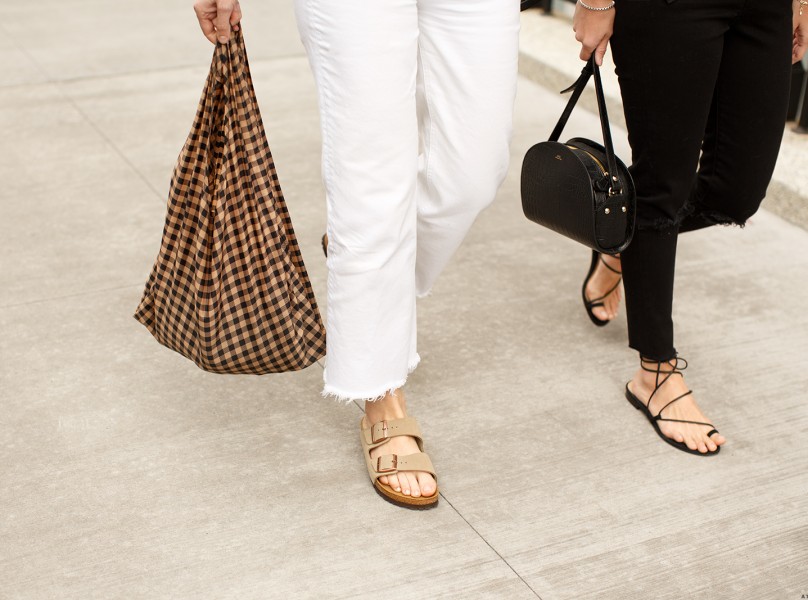
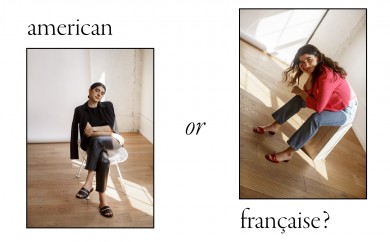
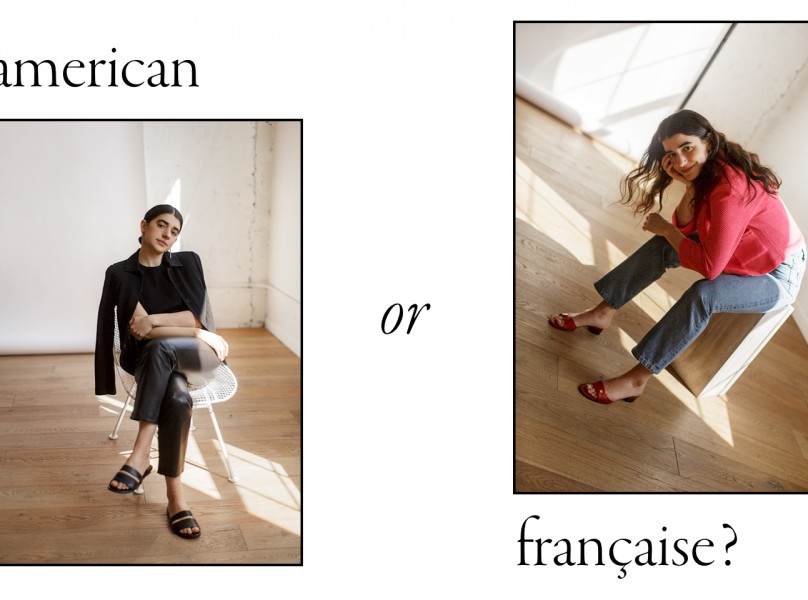
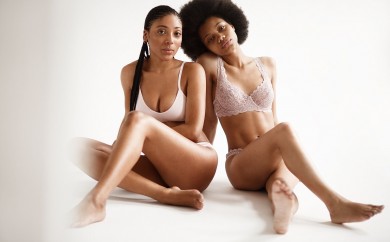
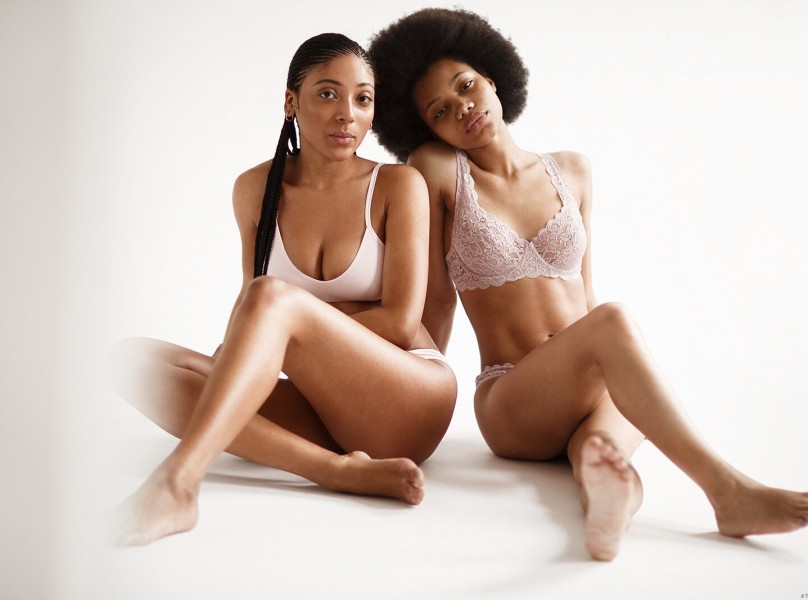
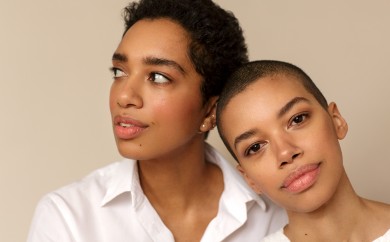
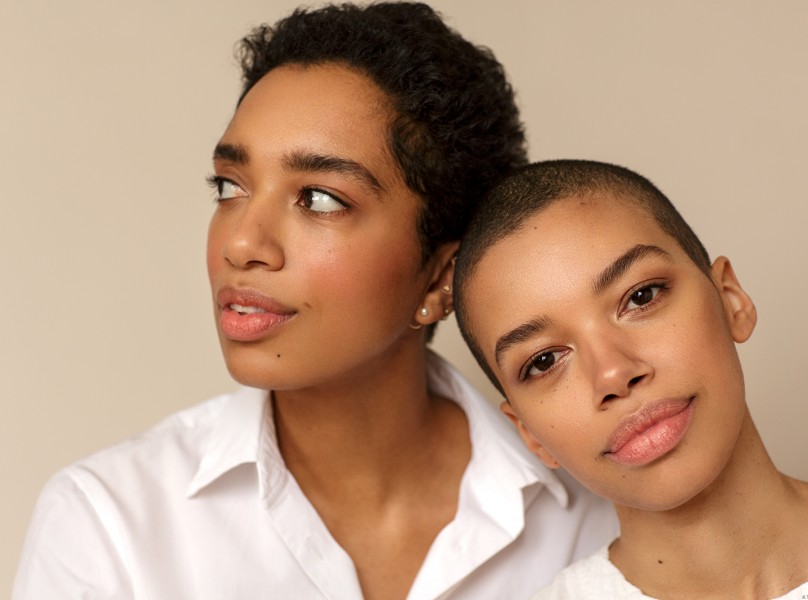


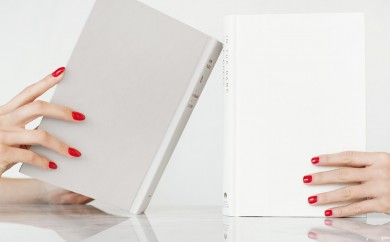
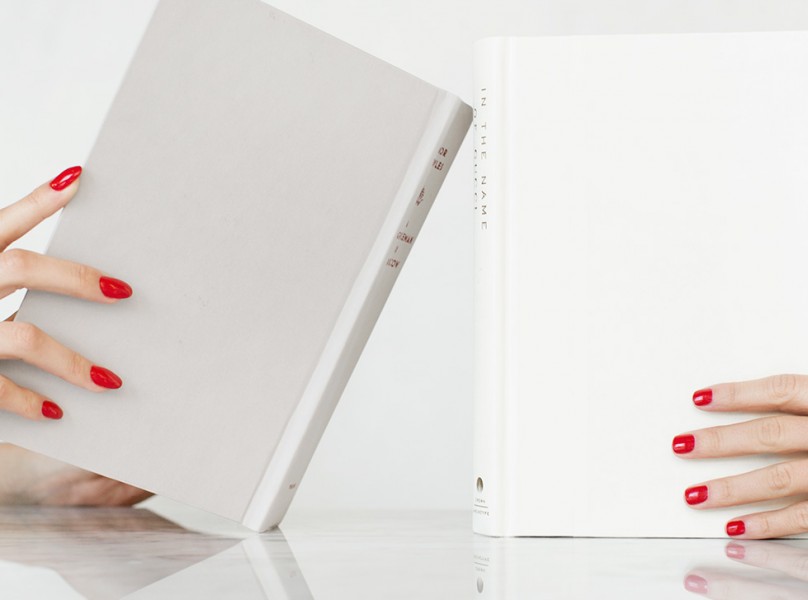
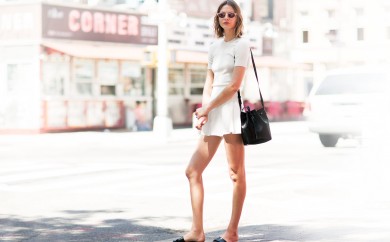
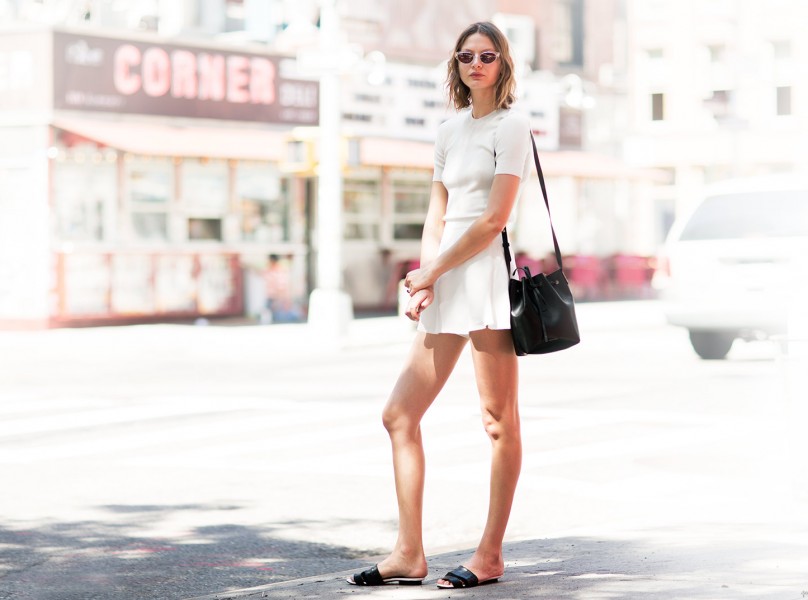
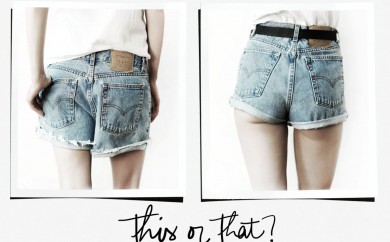
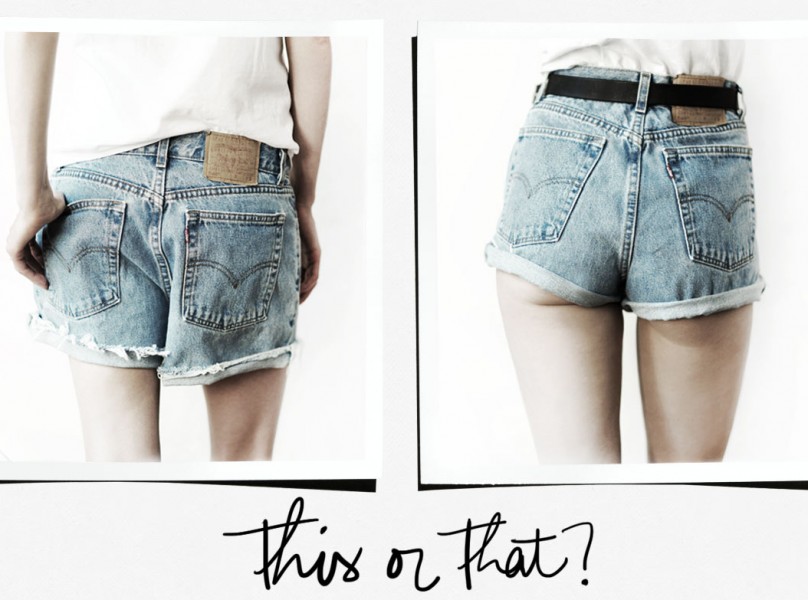
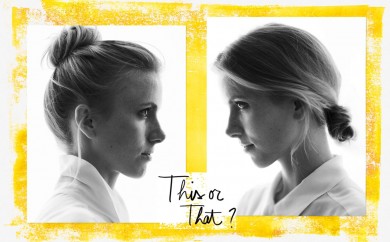
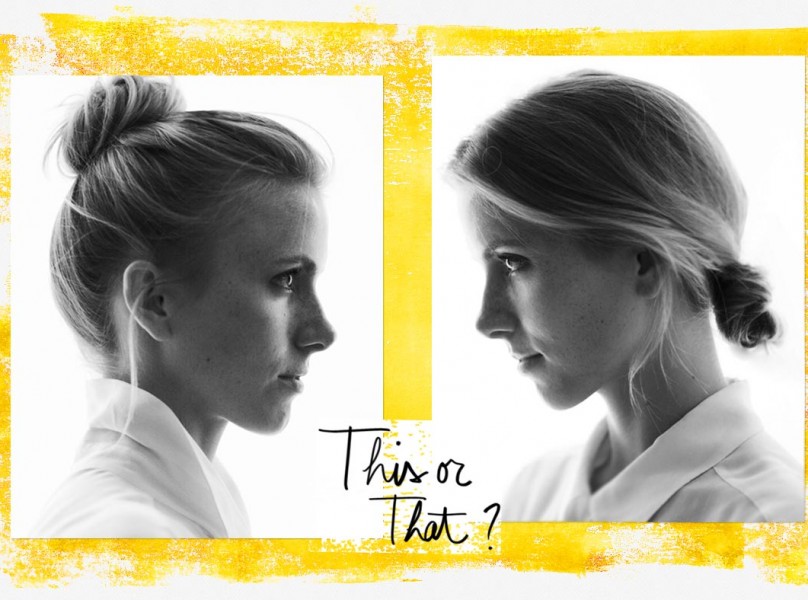

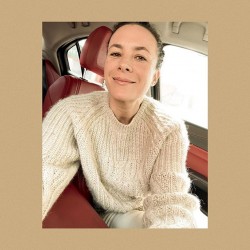

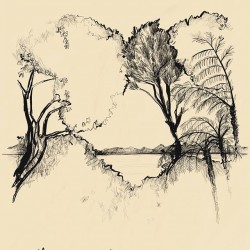
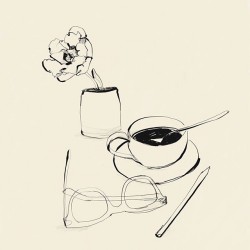
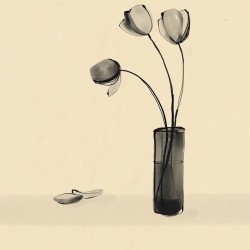
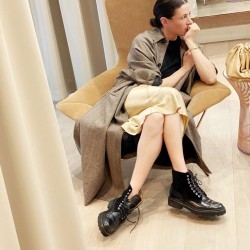

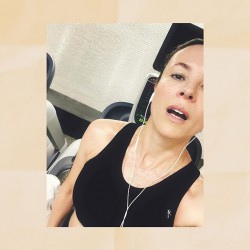
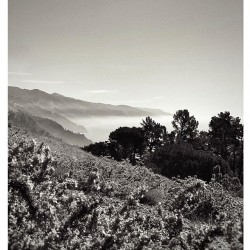
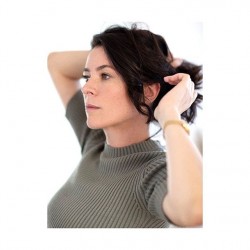
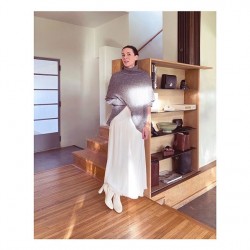
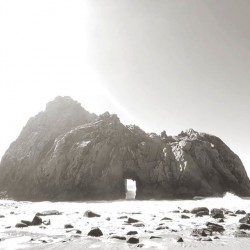

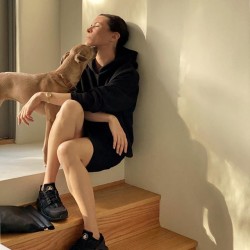
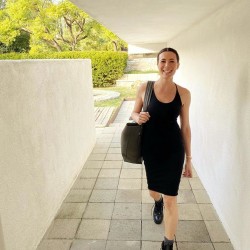
Ces articles “career” sont toujours très intéressant mais celui-là me touche particulièrement car il concerne la déco.
Egalement le parcours et la vision d’India Mahdavi est particulièrement intéressante.
Amélie
http://charlesrayandcoco.com
Love Love her work!!
it’s like magic dust everywhere she goes……..
xoxo
Yael Guetta
http://www.ftwwl.com
merci pour cette superbe interview
En dehors de son parcours extraordinaire, je trouve cette femme magnifique. C’est le genre de femme que j’aimerais rencontrer et ecouter parler pendant des heures. J’aime beaucoup son allure.
Je suis moi-même architecte, mais aussi graphiste, illustratrice, et je viens de monter mon entreprise.
L’expérience et les conseils d’India me sont très précieux.
Mille mercis pour ce moment passé avec elle !
great piece, inspiring creative. do you each edit your own posts, or does someone at the blog edit all content overall?
what an amazing interview — she is incredibly talented
http://hashtagliz.com
Loved this, so interesting. Thank you!
what a perfect interview about Life and Creativity. I heard her on so many levels – good for her that she knows what she wants for her business and her personal life.
I love her saying that a good project is a good client! I could not agree more! What a fascinating interview, Garance! xo
(=’.’=)
-Lauren
adorn la femme
A real looking person that doesn’t look like they walked off the runway. And yet, a woman that is beautiful, stylish, confident, and inspiring. Way to go. More ‘real’ looking people please and diversity in general.
J’adore son travail et vraiment son témoignage est très intéressant car je pense que toutes les femmes chefs d’entreprise sont en prise avec les mêmes problématiques.
Bonne continuation!
http://Www.interiordesign-Paris.com
So happy to see this post. India is super talented and beautiful. I love Jonathan Morr. Funny, generous and kind. I worked with him at The Royalton in the early 1990’s. A mentor and a good friend. He has such an amazing on for detail. I learned so much from him. Big love xx
Merci du partage, les photos sont magnifiques et quel goût!
J’adore!
Bizous, Christelle
http://www.lipleblog.com
Cette femme, c’est un univers.
Chaque projet est fort en personnalité, son approche de la couleur est splendide.
J’aime tout particulièrement le Cloître à Arles.
What an interesting woman!
This interview inspired me so much!! Thank you!!
One of the best interview posted , really enjoyed. Thank you!
Awesome, inspiring woman!!!
Absolutely loved this piece! I felt I was able to get a true glimpse into who India is and her process, as well as how she developed her professional pov and career.
Amoureux de déco, merci pour ce chouette interview ! Et bravo encore à l’équipe pour toute la diversité des thèmes abordés au fil des post.
j’ai etait à Paris à l’hotel Thoumieux seulement pour dormir dans son travail!
je reve encore avoir une faux peau de tigre pour mon lit!
je l’adore!
:)
She looks so powerful in that first picture and it immediately drew me to her and made me read the interview. Bravo for women like her, very inspirational to say the least.
http://www.sartreuse.com
Formidable chère India!!
Garance, can’t thank you enough for doing this interview!!!
Superbe interview que je ne découvre que maintenant :(